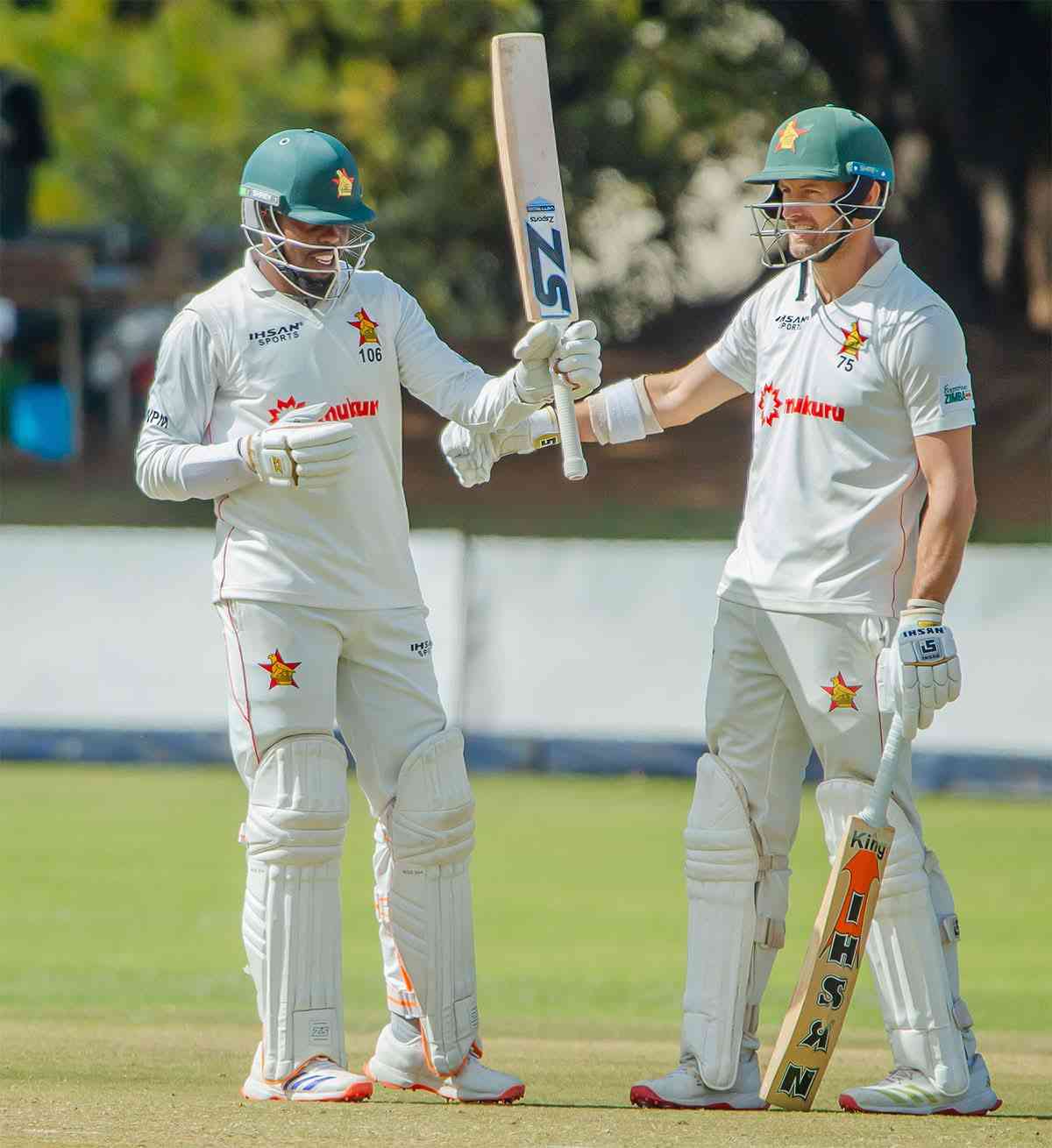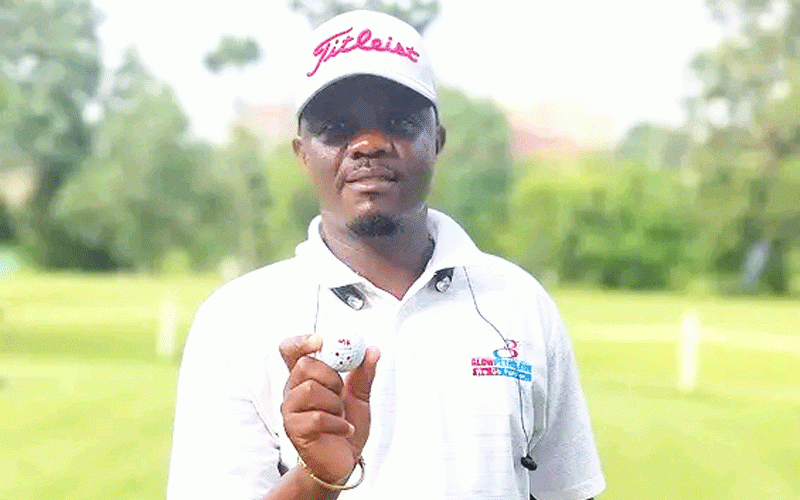
When Roderick Mutuma was crowned the Golden Boot Award winner in 2011, the Dynamos striker had scored a paltry 14 goals, less than half of the total games that constitute the season’s Castle Lager Premier Soccer League fixtures.
By Michael Kariati
A year later, it was the turn for Shabanie Mine striker Nelson Mazivisa who ended up with the Golden Boot Award after scoring 18 goals, which were three more than half the season’s 30 league matches.
Chicken Inn’s Tendai Ndoro smashed in 18 goals in the 2013 top hitman title. Some, however, argue that Ndoro could have surpassed the 20 goal mark had he not moved to South Africa’s Mpumalanga Black Aces during the course of the season.
This season, the rate of scoring goals appears to have gone further down, as the leading scorer at the moment is Highlanders’ Charles Sibanda who has so far managed only 12 goals in 22 matches.
Kuda Musharu, who threatened to come out with a glut of goals come the end of the season after plundering six goals in the first four matches, is now in second place with only nine goals from 22 games.
Observers are prepared to place bets that at this rate, Sibanda and Musharu will not be able to reach the 18 goal target come the end of the season.
This has raised questions as to what has happened to the land of great strikers. In the past, Zimbabwe had the likes of the late legendary Peter Nyama who scored 62 goals in 1971, the same year he won the Castle Soccer Star of the Year Award when turning out for Chibuku Shumba.
- Chamisa under fire over US$120K donation
- Mavhunga puts DeMbare into Chibuku quarterfinals
- Pension funds bet on Cabora Bassa oilfields
- Councils defy govt fire tender directive
Keep Reading
In 1986, a young Moses Chunga, then playing for Dynamos, plundered in 46 goals in one season. This was well after the likes of Gift “Ghetto” Mpariwa, Maronga Nyangela, and Shacky Tauro, had all gone past the 30 goal haul.
“My job was just to score goals and people counted them for me. I don’t even know how many I scored,” boasted Chunga, who now coaches Buffaloes.
Then came the likes of Agent Sawu, Wilfred Mugeyi, Zenzo Moyo, Adam and Peter Ndlovu, as well as Alois Bunjira who grabbed goals at will and running their totals also past the 30 goal target.
Some critics are quick to point out that the reason why Chunga, Sawu, and Mugeyi’s goals reached astronomical figures was that they included those from knockout tournaments such as the Chibuku Trophy, the Rothmans Shield, the BAT Rosebowl, and the Castle Cup, unlike today when only league match goals count.
But ask how many goals Charles Sibanda has scored in tournaments like the One Wallet Cup, and the Chibuku Super Cup to add to his current tally. You might realise that he would still have only the 12 goals to his name, all of which he scored in league games as he did not score any in the knockout competitions.
It is also important to note that the then Super League had only 12 clubs compared to today when there are 16 teams. This means the PSL clubs are playing eight games more than what was on offer in the Super League.
But the question is: Why has the situation sunk so low to an extent that the best striker in the land ends up with as little as 14 goals?
Masimba Mutami, assistant coach of first division side Flame Lilly offered his view. He says the quality of the strikers we have at the moment is not as good those of the olden days.
“In terms of quality, there is a huge gap between the strikers we have today and the ones we had in the past. Yesteryear’s strikers had the appetite and hunger for goals unlike the ones we have today,” said Mutami.
As theories and suggestions come through, former Black Rhinos defender and Zimbabwe Under-23 international Nesbert Saruchera offers a similar view to Mutami, but differs a bit. Saruchera thinks the strikers of today lack the basics of scoring goals as they are starting football at a late age, and lack technique.
Saruchera said during their days they had a conveyor belt that ran from primary school football, to secondary, then to youth club football in the suburbs, “until one was approached by a club to play for their junior teams from where he would then graduate to the senior team and maybe later into the national teams.”
He claims this system created so much competition in all departments that a striker had to be seen to be scoring many and great goals to attract attention, which is not the case today. “[These days], a 22-year-old player comes from nowhere and gate crashes into the top flight league,” said Saruchera.
In addition, the former Chipembere defender also offered an interesting point. He said most of today’s strikers were diminutive in structure — very small framed strikers — while most of the strikers during their time had an imposing physical appearance.
He says they had strong and tough strikers in the form of Tauro, Gift Mpariwa, Charles Chirwa, Nyaro Mumba, Madinda Ndlovu, amongst others, whose appearances threatened defenders. “Today, the strikers are weak. They do not have that aggression and physical power to knock down defenders in search of goals,” said Saruchera.
The former Warriors trialist attributed this to the changing world, adding that the physically stronger strikers were still there but no one was going out to find them in schools.
He warned that the situation needed to change as fans attended matches for goals and to be entertained. He said although the impact might not be immediate, it would not be long before the crowd lost patience and started deserting stadiums as there was no entertainment for them.
But Kennedy Ndebele, was of the opinion that the reason why there has not been a glut of goals was due to the change in playing systems.
Ndebele argued that the formations that have been adopted these days, the 3:5:2, and the 4:5:1, were more defensive and did not give enough opportunities to strikers who are normally surrounded by two or more defenders.
“Everywhere the goals are drying up,” he said. “Only last season, the top goal scorer in South Africa had 11 goals only,” Ndebele said.











